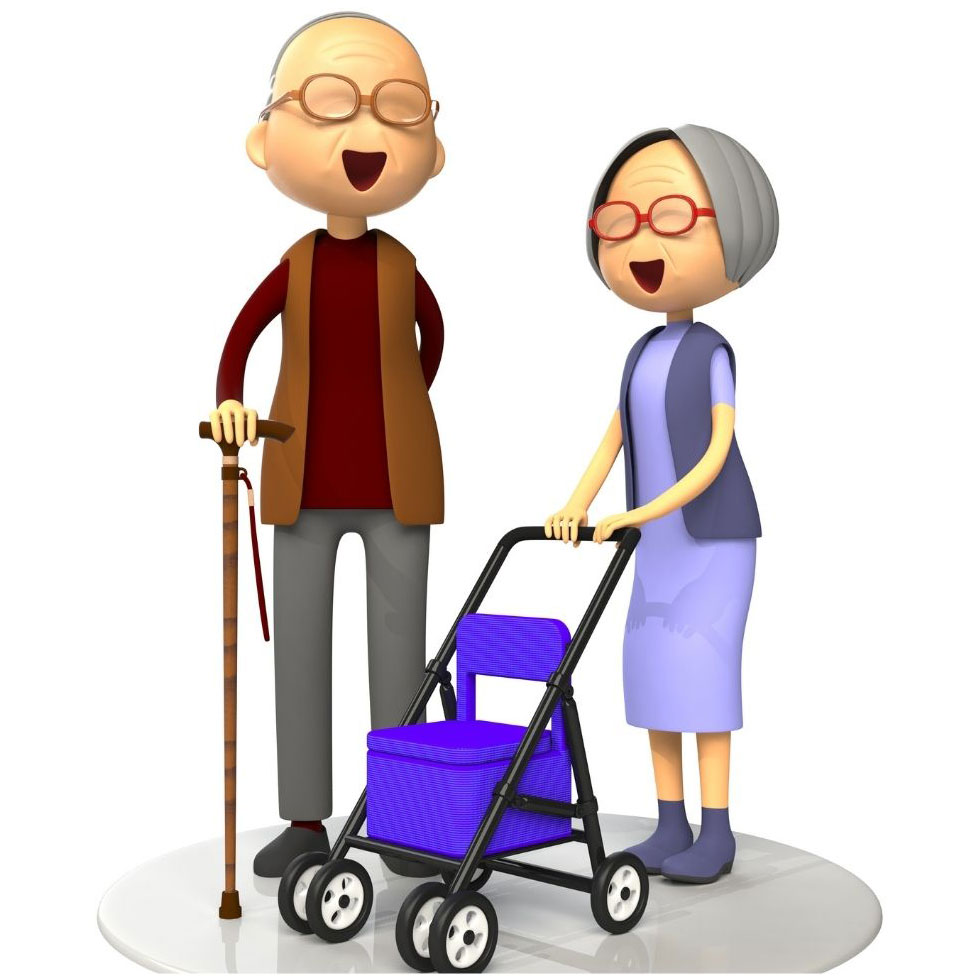When Elderly Parent Can Not Walk. Hi, I’m Ed, and I know that caring for an elderly parent who can’t walk can be a deeply emotional and physically challenging experience. Here at Elderly Independence, I’ve dealt with similar situations, and I’m here to guide you through this difficult period.
When an elderly parent can’t walk, it affects more than just their mobility. It touches every aspect of their lives and yours. What do you do? How can you best support them? How do you modify your home and routine? These questions may be overwhelming, but together, we’ll explore practical solutions and expert advice to navigate this new chapter.
What To Do When Elderly Parent Can’t Walk. Join me as we delve into strategies, tools, and emotional support to help you and your parent during this time. It’s a path filled with challenges, but with the right guidance, it can also be a journey of growth, empathy, and love.
In this article, we will explore various strategies and solutions for when your elderly parent can’t walk. From seeking medical advice and evaluation to assisting with daily activities, we will provide guidance on how to support your parent and ensure their well-being.
When Elderly Parent Can Not Walk: Understanding the Challenges of Limited Mobility

One of the main challenges of limited mobility is the loss of independence. Walking is a basic activity that allows individuals to move around freely and perform daily tasks. When this ability is taken away, it can lead to feelings of frustration, helplessness, and a loss of self-esteem. It is important to approach the situation with empathy and understanding, and to involve your parent in decision-making as much as possible.
Another challenge is the increased risk of falls and injuries. Without the ability to walk, your parent may be more prone to accidents, especially if they attempt to move around without assistance. It is important to create a safe environment by removing tripping hazards, installing grab bars in the bathroom, and ensuring that pathways are clear and well-lit. Additionally, consider investing in mobility aids such as walkers or wheelchairs to provide stability and support.
Limited mobility can also have a negative impact on your parent’s physical health. Lack of movement can lead to muscle weakness, joint stiffness, and decreased flexibility. It is important to encourage your parent to engage in regular physical therapy exercises or gentle movements that can help maintain muscle strength and improve mobility. Consult with a healthcare professional or physical therapist to develop a personalized exercise plan that is safe and suitable for your parent’s condition.
Lastly, limited mobility can also take a toll on your parent’s mental and emotional well-being. The loss of independence and the inability to participate in activities they once enjoyed can lead to feelings of isolation and depression. It is important to provide emotional support and engage your parent in social activities and community programs. Encourage them to maintain connections with friends and family, and consider seeking professional home care services to provide companionship and assistance.
Seeking Medical Advice and Evaluation

When your elderly parent is unable to walk, it is crucial to seek medical advice and evaluation to determine the underlying cause of their limited mobility. Consulting with a healthcare professional will help you understand the specific challenges your parent is facing and develop an appropriate plan of action.
1. Schedule an appointment:
Make an appointment with your parent’s primary care physician or geriatric specialist. They will conduct a thorough examination and may order additional tests or refer your parent to a specialist, such as an orthopedic doctor or neurologist, depending on the suspected cause of their mobility issues.
2. Discuss symptoms and medical history:
During the appointment, provide detailed information about your parent’s symptoms, including when they started, any changes in their condition, and any other relevant medical history. This will help the healthcare professional make an accurate diagnosis.
3. Understand the diagnosis:
Once the evaluation is complete, the healthcare professional will provide a diagnosis and explain the underlying cause of your parent’s limited mobility. It could be due to conditions such as arthritis, stroke, Parkinson’s disease, or a musculoskeletal injury. Understanding the diagnosis will help you make informed decisions about their care.
4. Explore treatment options:
Depending on the diagnosis, the healthcare professional will discuss various treatment options available. This may include medication, physical therapy, assistive devices, or surgical interventions. They will explain the potential benefits and risks of each option, allowing you to make an informed decision.
5. Follow-up appointments:
Regular follow-up appointments will be necessary to monitor your parent’s progress and make any necessary adjustments to their treatment plan. These appointments will also provide an opportunity to address any concerns or questions you may have.
Remember, seeking medical advice and evaluation is essential to ensure your parent receives the appropriate care and treatment for their limited mobility. It is important to be proactive and advocate for their needs, working closely with healthcare professionals to improve their quality of life and overall well-being.
Assisting with Daily Activities
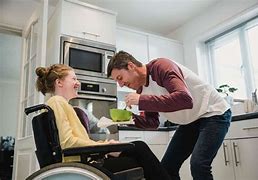
When an elderly parent is unable to walk, it is important to provide assistance with their daily activities to ensure their comfort and well-being. Here are some tips on how to assist your parent with their daily tasks:
1. Personal Care:
Help your parent with activities such as bathing, dressing, and grooming. Ensure that their personal hygiene needs are met and that they feel clean and comfortable.
2. Mobility and Transfers:
Assist your parent in moving from one place to another, such as from the bed to a chair or from a wheelchair to the toilet. Use mobility aids like transfer belts or sliding boards to make the process easier and safer for both of you.
3. Meal Preparation:
Prepare nutritious meals for your parent or arrange for meal delivery services if needed. Ensure that their dietary needs are met and that they have access to healthy and balanced meals.
4. Medication Management:
Help your parent with their medication schedule, ensuring that they take the right medications at the right time. Consider using pill organizers or setting up reminders to help them stay on track with their medication regimen.
5. Household Chores:
Take care of household chores such as cleaning, laundry, and grocery shopping. This will help alleviate some of the physical strain on your parent and ensure that their living environment is clean and organized.
6. Transportation:
Arrange for transportation to medical appointments, social activities, or any other outings your parent may want to participate in. Consider using accessible transportation services or installing mobility aids in your vehicle to make transportation easier and more comfortable for them.
7. Emotional Support:
Offer emotional support and reassurance to your parent during this challenging time. Encourage them to express their feelings and concerns, and be a good listener. Engage in activities that they enjoy and provide companionship to combat feelings of loneliness or isolation.
Remember, it is important to involve your parent in decision-making and respect their autonomy as much as possible. Seek their input and preferences when providing assistance, and always prioritize their comfort and dignity. Additionally, consider seeking professional home care services if needed, as trained caregivers can provide specialized assistance and support tailored to your parent’s specific needs.
Exploring Mobility Aids and Devices
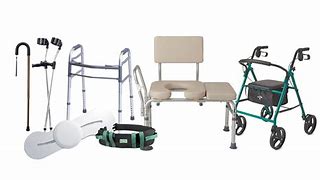
When an elderly parent is unable to walk, it is important to explore the various mobility aids and devices available to assist them in maintaining their independence and improving their quality of life. Here are some options to consider:
1. Canes and Walkers:
Canes and walkers are common mobility aids that provide stability and support while walking. Canes are suitable for individuals who need minimal assistance, while walkers offer more stability and are ideal for those who require additional support.
2. Wheelchairs:
Wheelchairs are a great option for individuals who are unable to walk long distances or have limited mobility. There are manual wheelchairs that require someone to push them, as well as electric wheelchairs that can be operated independently.
3. Mobility Scooters:
Mobility scooters are battery-powered devices that allow individuals to move around independently. They are especially useful for outdoor activities and longer distances.
4. Transfer Aids:
Transfer aids such as transfer boards, transfer belts, and hoists can help safely move an elderly parent from one surface to another, such as from a bed to a wheelchair or from a wheelchair to a car.
5. Stairlifts and Ramps:
If your parent has difficulty climbing stairs, installing a stairlift or ramp can provide them with easier access to different levels of the house.
6. Bathroom Safety Equipment:
Installing grab bars, raised toilet seats, and shower chairs can make the bathroom safer and more accessible for your parent.
7. Assistive Devices for Daily Activities:
There are various assistive devices available to help with daily activities such as dressing, eating, and grooming. These include reachers, dressing sticks, and adaptive utensils.
When considering mobility aids and devices, it is important to involve your parent in the decision-making process. Their comfort and preferences should be taken into account to ensure they feel empowered and maintain their dignity.
Additionally, it may be helpful to consult with a healthcare professional or occupational therapist who can provide guidance on the most suitable mobility aids and devices for your parent’s specific needs.
Remember, mobility aids and devices are not a one-size-fits-all solution. It may take some trial and error to find the right options that work best for your parent. Regularly reassessing their needs and making necessary adjustments will help ensure they have the support they require to navigate their daily activities safely and comfortably.
Physical Therapy and Exercises for Improved Mobility
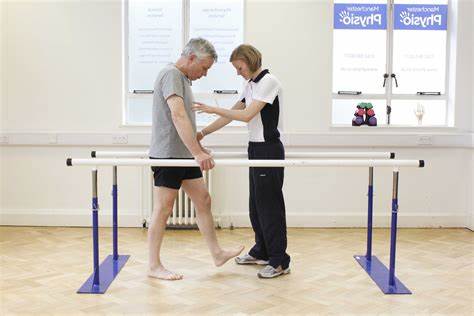
When an elderly parent is unable to walk, physical therapy and exercises can play a crucial role in improving their mobility and overall quality of life. These interventions can help strengthen muscles, improve balance, and increase flexibility, allowing them to regain some level of independence and functionality. Here are some key considerations and recommendations for incorporating physical therapy and exercises into their daily routine:
1. Consult with a healthcare professional:
Before starting any exercise program, it is important to consult with a healthcare professional, such as a physical therapist or geriatric specialist. They can assess your parent’s specific needs and limitations and develop a personalized plan that is safe and effective.
2. Range of motion exercises:
Range of motion exercises involve moving the joints through their full range of motion to maintain flexibility and prevent stiffness. These exercises can be done while sitting or lying down and can help improve joint mobility and reduce the risk of contractures.
3. Strengthening exercises:
Strengthening exercises focus on building muscle strength, which is essential for maintaining stability and supporting mobility. These exercises can include leg lifts, arm curls, and resistance training using bands or weights. It is important to start with low resistance and gradually increase as tolerated.
4. Balance and coordination exercises:
Balance and coordination exercises are crucial for preventing falls and improving overall stability. These exercises can include standing on one leg, walking heel-to-toe, and practicing tai chi or yoga. A physical therapist can provide guidance on specific exercises that target balance and coordination.
5. Assistive devices:
In addition to exercises, your parent may benefit from using assistive devices such as canes, walkers, or wheelchairs. These devices can provide support and stability, allowing them to move around more safely and independently. A physical therapist can assess their needs and recommend the most appropriate assistive devices.
6. Regular physical therapy sessions:
Depending on your parent’s condition, regular physical therapy sessions may be recommended. These sessions can be conducted at a clinic or in the comfort of their own home. Physical therapists can provide hands-on guidance, monitor progress, and make necessary adjustments to the exercise program.
Remember, consistency is key when it comes to physical therapy and exercises. Encourage your parent to stick to their routine and provide them with the necessary support and motivation. With time and effort, they may experience improvements in their mobility and regain some of their independence.
Creating a Safe and Accessible Living Environment
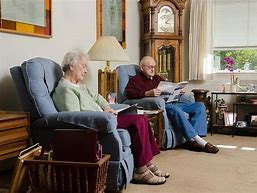
When an elderly parent is unable to walk, it is crucial to create a safe and accessible living environment to ensure their well-being and prevent accidents or injuries. Here are some tips on how to make their home more suitable for their limited mobility:
1. Remove hazards:
Conduct a thorough assessment of the living space and remove any potential hazards such as loose rugs, cluttered pathways, or furniture that obstructs movement. Ensure that all walkways are clear and well-lit to prevent tripping or falling.
2. Install grab bars and handrails:
Install grab bars and handrails in key areas of the house, such as the bathroom, bedroom, and stairways. These assistive devices provide stability and support when moving around and can significantly reduce the risk of falls.
3. Modify the bathroom:
Consider making modifications to the bathroom to make it more accessible. Install a raised toilet seat, grab bars near the toilet and shower, and a non-slip mat in the shower or bathtub. These modifications can enhance safety and independence during daily hygiene routines.
4. Create a bedroom on the ground floor:
If your parent’s bedroom is located on an upper floor, consider creating a bedroom on the ground floor to eliminate the need for stairs. This will make it easier for them to access their bedroom and reduce the risk of falls.
5. Use assistive devices:
Explore the use of assistive devices such as walkers, canes, or wheelchairs to help your parent move around more easily. Consult with a healthcare professional to determine the most suitable device for their specific needs.
6. Consider home modifications:
Depending on your parent’s mobility limitations, you may need to consider making more significant modifications to the home, such as installing ramps or stairlifts. These modifications can provide greater accessibility and independence for your parent.
7. Ensure proper lighting:
Adequate lighting is essential to prevent accidents and falls. Install bright, energy-efficient lighting throughout the house, especially in hallways, stairways, and entrances. Consider using motion sensor lights to automatically illuminate key areas when your parent moves around.
Remember, each individual’s needs may vary, so it is important to assess your parent’s specific requirements and consult with healthcare professionals or occupational therapists for personalized recommendations. By creating a safe and accessible living environment, you can help your elderly parent navigate their home with greater ease and confidence.
Emotional Support and Mental Well-being

When an elderly parent is unable to walk, it can have a significant impact on their emotional well-being. They may feel frustrated, isolated, and dependent on others for their basic needs. As a caregiver, it is important to provide emotional support and create a positive environment for your parent.
One way to support your parent emotionally is by actively listening to their concerns and feelings. Encourage open communication and let them express their frustrations or fears. Validate their emotions and reassure them that you are there to support them through this difficult time.
It is also important to involve your parent in decision-making and give them a sense of control over their own lives. Discuss their preferences and involve them in planning their daily activities, even if they require assistance. This can help boost their self-esteem and maintain a sense of independence.
Engaging in activities that bring joy and purpose to your parent’s life is another way to support their emotional well-being. Encourage hobbies or interests that they can still participate in, even if they are unable to walk. This could include reading, listening to music, doing puzzles, or engaging in crafts. These activities can provide a sense of fulfillment and help distract from any negative emotions.
Additionally, consider the importance of social interaction for your parent’s mental well-being. Loneliness and isolation can have a detrimental effect on their emotional health. Encourage visits from friends and family, or explore community programs and support groups specifically designed for seniors with limited mobility. These opportunities for socialization can help combat feelings of loneliness and provide a sense of belonging.
Lastly, don’t forget to take care of your own emotional well-being as a caregiver. It can be challenging to witness your parent’s struggles, and it is important to seek support for yourself as well. Reach out to support groups, therapists, or other caregivers who can provide guidance and understanding.
In conclusion, when an elderly parent is unable to walk, providing emotional support and maintaining their mental well-being is crucial. By actively listening, involving them in decision-making, engaging in activities, promoting social interaction, and taking care of your own emotional well-being, you can create a positive and supportive environment for your parent during this challenging time.
Engaging in Social Activities and Community Programs

When an elderly parent is unable to walk, it is important to ensure that they remain socially engaged and connected to their community. Limited mobility can often lead to feelings of isolation and loneliness, so finding ways to keep them involved in social activities and programs can greatly improve their overall well-being.
One option is to explore local senior centers or community centers that offer a variety of activities and programs specifically designed for older adults. These centers often have a range of activities such as arts and crafts classes, exercise programs, educational workshops, and social events. Encouraging your parent to participate in these activities can help them stay active, meet new people, and maintain a sense of purpose and fulfillment.
Another option is to look for support groups or clubs that cater to individuals with limited mobility or specific health conditions. These groups provide a safe and understanding environment where your parent can connect with others who are going through similar experiences. They can share their challenges, exchange advice, and form meaningful friendships.
If your parent is unable to leave their home, there are still ways to keep them socially engaged. Encourage them to use technology to connect with family and friends through video calls or social media platforms. This can help them stay connected and feel a sense of belonging even if they are physically unable to leave their home.
Additionally, consider organizing regular visits from family members, friends, or neighbors. Spending quality time with loved ones can greatly improve your parent’s mood and overall well-being. Plan activities such as playing board games, watching movies, or simply having a conversation to keep them engaged and entertained.
Lastly, consider enlisting the help of a professional caregiver or home care service. These professionals can provide companionship and support to your parent, ensuring that they have regular social interactions and someone to talk to.
In conclusion, when an elderly parent is unable to walk, it is crucial to prioritize their social engagement and connection to the community. By exploring social activities and community programs, utilizing technology, organizing visits, and considering professional caregivers, you can help your parent maintain a fulfilling and active social life despite their limited mobility.
Seeking Professional Home Care Services

When your elderly parent is unable to walk, it may become necessary to seek professional home care services to ensure their safety and well-being. Professional caregivers can provide the necessary assistance and support to help your parent maintain a good quality of life.
1. Assessing the Needs:
Before seeking professional home care services, it is important to assess your parent’s specific needs. Consider their mobility limitations, medical conditions, and any other factors that may require specialized care.
2. Researching Home Care Agencies:
Look for reputable home care agencies in your area that specialize in providing care for individuals with limited mobility. Read reviews, ask for recommendations, and inquire about the services they offer.
3. Consultation and Evaluation:
Schedule a consultation with the home care agency to discuss your parent’s needs and preferences. They will conduct an evaluation to determine the level of care required and develop a personalized care plan.
4. Caregiver Selection:
The agency will assign a caregiver who is trained and experienced in providing care for individuals with limited mobility. You may have the opportunity to meet and interview potential caregivers to ensure a good fit.
5. Services Provided:
Professional home care services can include assistance with activities of daily living, such as bathing, dressing, toileting, and meal preparation. Caregivers can also provide companionship, medication reminders, and transportation to medical appointments.
6. Regular Monitoring and Communication:
Stay in regular communication with the home care agency to ensure that your parent’s needs are being met. Regularly assess the quality of care provided and address any concerns or issues that may arise.
7. Respite Care:
Taking care of an elderly parent with limited mobility can be physically and emotionally demanding. Consider utilizing respite care services offered by the home care agency to give yourself a break and prevent caregiver burnout.
8. Financial Considerations:
Understand the costs associated with professional home care services and explore options for financial assistance, such as long-term care insurance or government programs.
Seeking professional home care services can provide peace of mind knowing that your elderly parent is receiving the necessary support and care. It allows them to age in place comfortably and maintain their independence to the best of their abilities.
Frequently Asked Questions
What to do when elderly parents can no longer walk?
Assess the Situation: Determine if this is a sudden or gradual loss of mobility and seek medical advice to understand the underlying cause.
Provide Supportive Equipment: Consider mobility aids like a walker, wheelchair, or cane.
Modify Living Environment: Make necessary changes to the living environment to accommodate their mobility challenges, like installing grab bars and ramps.
Explore Therapy Options: Physical therapy might be appropriate, based on a healthcare provider’s advice.
Consider Care Options: Depending on the severity, professional caregiving or an assisted living facility may be required.
What to do when mom can’t walk?
Seek Immediate Medical Attention: If the loss of ability to walk is sudden, it could be a serious medical emergency.
Evaluate Needs: Determine your mother’s immediate needs and long-term care requirements.
Engage Professionals: Consider engaging physical therapists or occupational therapists if appropriate.
Provide Emotional Support: Emotional encouragement can be incredibly important in these situations.
How do you get an elderly person to walk again?
Consult Health Professionals: Work with a medical team to determine the underlying cause and develop a personalized treatment plan.
Physical Therapy: Engaging in a supervised physical therapy program could help in regaining strength and balance.
Provide Suitable Equipment: Mobility aids might be necessary to help them walk again safely.
Encourage Gradual Progress: Understand that regaining mobility might be a slow process and require patience, encouragement, and support.
Other Places For You To Explore
Explore
Conclusion
Our journey through understanding what to do when an elderly parent can’t walk has been filled with insights, advice, and compassion. I hope you found the information useful and that it has empowered you to make informed decisions that are best suited to your loved one’s unique needs.
At Elderly Independence, I’m committed to offering expert-backed, well-researched, and empathetic guidance to families facing the complexities of aging and care. Drawing on my personal experience and insights from professionals, I strive to make the road to elderly care a bit more manageable.
If you need further assistance or have specific questions related to caring for your loved one, please don’t hesitate to reach out. Together, we can ensure that our elderly parents live with the dignity, comfort, and love they deserve, even when they can’t walk. Your dedication and love for your parent are the first steps in making this challenging time a fulfilling experience. Let’s continue to walk this path together.
